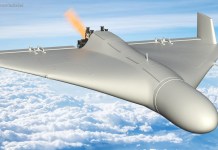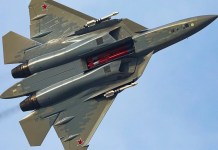Vertical Farming, with innovative technique, is fast managing to attract investments from international organizations in the Middle-East, especially the UAE. Vertical Farming, as it sounds is like indoor farming techniques using controlled-environment agriculture (CEA) technology, where plans can be grown on buildings for both climate control and consumption.
According to Orbis Research, the vertical farming market, a type of agriculture in which food grows on trays or hanging modules in a climate-controlled, indoor facility, is expected to reach USD 1.21 billion by 2021 at a CAGR of 26.4 per cent from only USD 0.38 billion in 2016.
One of the six Gulf Cooperation Council (GCC) countries leading this change is the UAE, which has upcoming projects facilitated by the government as well as private players to help increase food security in the region.
These include the UAE Ministry of Climate Change and Environment allotting space for 12 vertical farms to be built by Shalimar Biotech Industries, and the world’s largest vertical farm for Emirates Airlines by Crop One Holdings Inc.
With around 90 per cent of food being imported in the UAE, territorial problems of water scarcity and small percentages of arable land, vertical farming is becoming increasingly vital to ensure food security within the region.
Mariam Al Mehiri, Minister of Future Food Security and a leading campaigner of urban farming, plans to create a ‘Food Valley’ or a technology hub, dedicated to the development of food and farming automation.
The Food Valley, and other government-led initiatives, are being introduced to attract and enable a new generation of farmers to help build future sustainability.
The minister, during an interview to euronews, said “(The idea) comes from the Silicon Valley in the US, where you have technologies, or start-ups, sprouting and developing into commercial giants. We want to bring this to the UAE and build a Food Valley that’s all about food technologies.”
By capitalising on vertical space, and controlling the environment for year-round optimal growth, Controlled Environment Agriculture (CEA) can produce significantly more yields per square foot than traditional agriculture, while using only a fraction of the water.
AgraME 2019 is creating a platform for the latest technology to be showcased to the regional agribusiness market, along with promoting knowledge sharing between leaders in the global industry and key local players around urban farming techniques and methods.
AgraME 2019, to be held from March 5 – 7, will bring to Dubai some of the leading innovators and urban farming experts.
Henry Gordon-Smith, Founder and Managing Director of Agritecture and an acknowledged global thought leader in urban agriculture, said the Middle East has an unprecedented ability to reshape critical infrastructure that supports modern human life.
“The potential is certainly there to transform what has historically been a relatively small traditional farming industry into perhaps the most technologically advanced agriculture industry in the world. This means economic development, increased production of nutritious local produce, and lowered food costs, all with minimal water consumption and increased resilience to climate change and foreign markets,” said Gordon-Smith.
Bob Hunsche, Sales Manager, Van der Hoeven said; “We are really starting to see the horticulture industry take off in the Middle East. We have just completed the largest greenhouse project in the UAE (11 ha). With the most advanced technology in terms of climate and humidity control, the facility is expected to locally produce 3,000 tonnes of tomatoes year-round with the aim of helping the UAE become more self-sufficient in its food production.”
Samantha Bleasby, Exhibition Director of AgraME said, “With the aim of increasing food security in the Middle East and attaining the UN Sustainable Development Goal (SDG) of zero hunger, we are excited to present the industry with new technologies from around the globe and free-to-attend learning and networking opportunities that will increase productivity in the region with sustainable use of water and land resources.”




